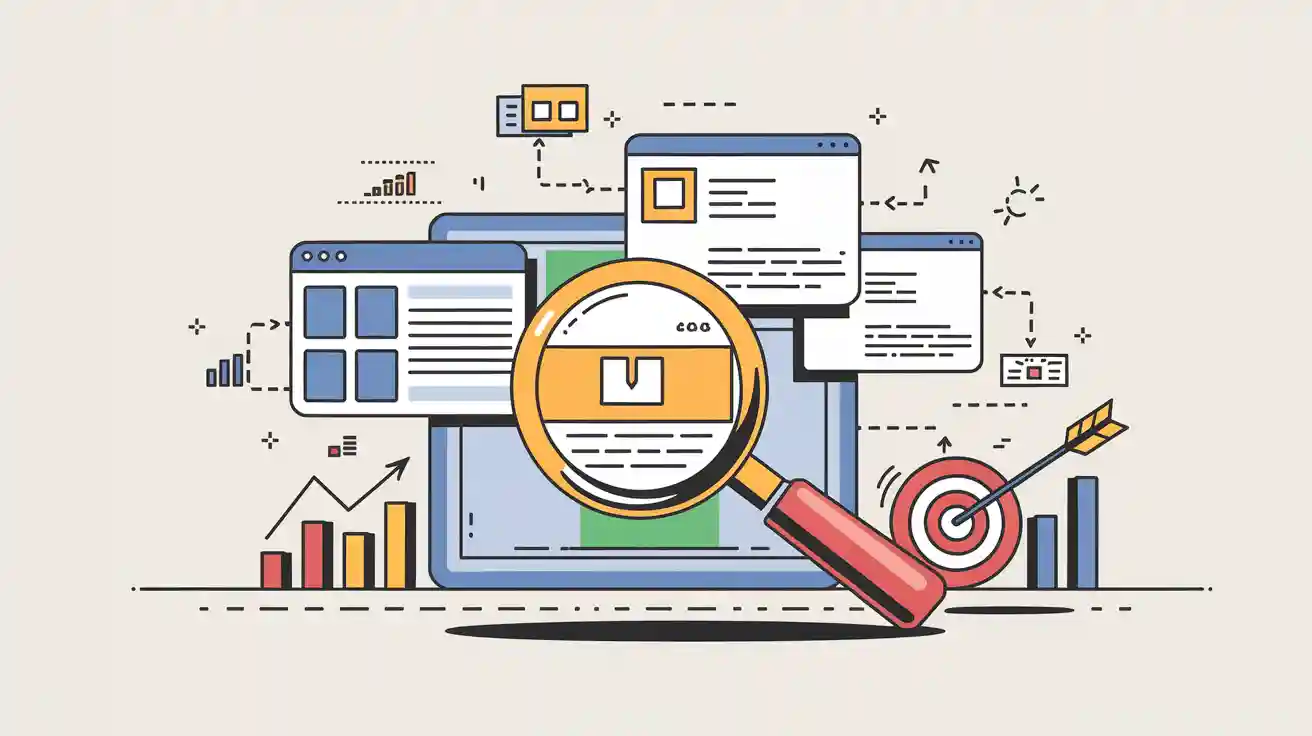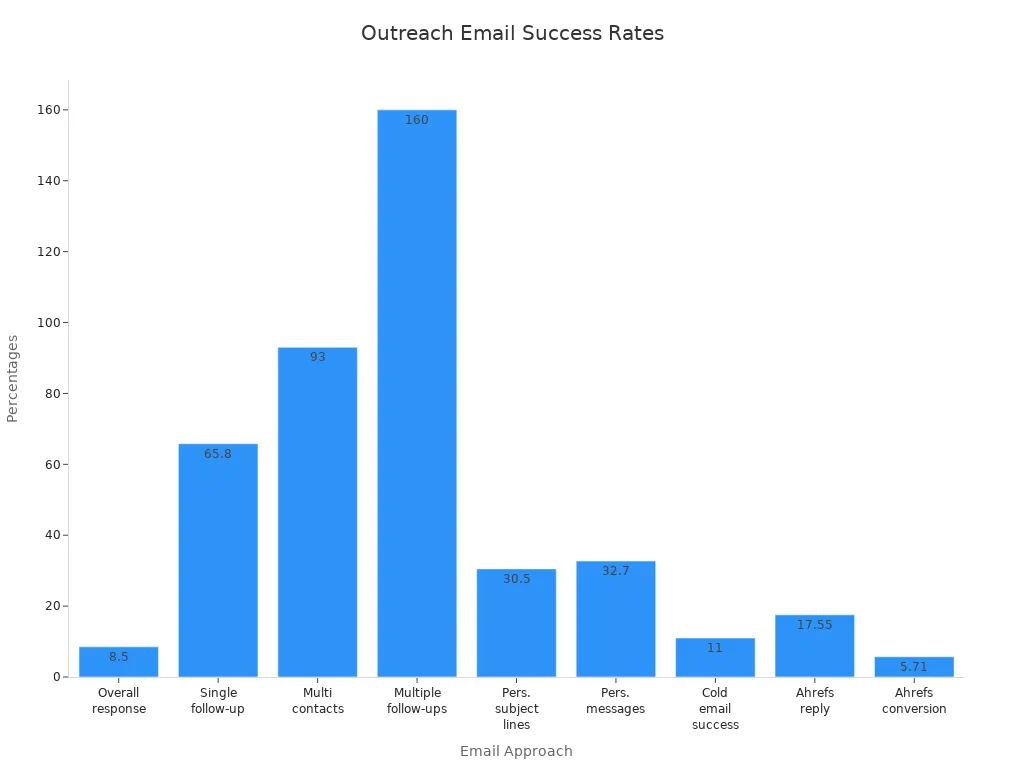3 Ways Resource Pages Boost Backlink Success

Have you noticed how some websites rank higher easily? One trick is using resource pages. These are lists of helpful links for a specific topic. Adding your good content to these pages gets you backlinks. These links come from trusted websites with strong authority. This boosts your SEO and brings more visitors to your site. Resource pages act like a bridge, connecting your content to people searching for useful information.
Key Takeaways
Use Google tricks like
intitle:andinurl:to find resource pages fast.Write personalized emails to page owners. Friendly messages get more backlinks.
Send a follow-up email after one week. Polite reminders help a lot.
Look for broken links on resource pages. Offer your content to replace them.
Use tools like Check My Links and Ahrefs to make finding pages and links easier.
1. Find the Right Resource Pages
Finding good resource pages is the first step to getting strong backlinks. Look for pages that match your topic and can feature your content. Here’s how to do it:
Use Google Search Tricks to Find Resource Pages
Google search tricks help you find resource pages faster. They let you narrow your search to find what you need. For example:
Use
intitle:to find pages with certain words in their titles. Searchingintitle:resources coffeeshows coffee-related resource pages.Try
inurl:to find pages with certain words in their web addresses. For example,inurl:resources fitnessshows fitness resource pages.Combine these tricks for better results. A search like
intitle:resources inurl:resources marketingfinds marketing resource pages.
These tricks make it easier to find pages with helpful links in your field.
Check Resource Pages for Relevance
Not all resource pages are useful. Make sure the ones you find match your topic. Look at their content and links. Do they share helpful resources? Are the links good quality and working?
Use tools to check how trustworthy the page is. For example:
Metric | What It Does | Why It Helps |
|---|---|---|
Domain Authority | Shows how strong a site is | Helps find good link opportunities |
Trust Flow | Spots bad or spammy links | Checks link quality |
Topic Match Score | Confirms the page fits your topic | Builds links for your specific niche |
Review the pages yourself to ensure they fit your content and audience.
Make a List of Great Resource Pages
After finding good pages, make a list of the best ones. Focus on pages with strong SEO scores and a clear theme. Check that they are updated often and written by trusted authors. This list will help you reach out and get backlinks.
By following these tips, you can find resource pages that improve your SEO and help you get valuable backlinks.
2. Get Links from Resource Pages
After finding good resource pages, the next step is getting links. You need to contact the page owners and ask them to add your content. Here’s how to do it well:
Write a Strong Outreach Email
Your email is your first impression. Make it short and friendly. Use the person’s name and mention their resource page. This shows you’ve looked at their work.
For example, instead of saying, “Add my link,” try this:
“Hi [Name],
I saw your resource page on [Topic] and found it very helpful. I noticed you included great resources on [specific topic]. I made a guide on [your content topic] that could be a great addition to your list.”
Personalizing your email is important. Emails with personal touches get 30% more replies. Take time to make each email special.
Show Why Your Content is Useful
When you share your content, explain why it’s helpful. Show how it adds something new or fills a gap. For example, if their page doesn’t have updated info, explain how your content fixes that.
Don’t just ask for a link. Explain how your content helps their readers. You could say:
“My guide has the latest tips and research. It’s easy to follow and saves time for your readers.”
This makes it more likely they’ll add your link and trust you.
Follow Up for Better Results
Don’t stop after one email. Sending a follow-up can help you get more replies. A reminder after a week can restart the conversation.
Here are tips for follow-ups:
Be polite and professional.
Mention your first email to remind them.
Don’t be pushy; kindly explain your content’s value again.
Studies show follow-ups can boost replies by 160%. So, send a second or third email if needed.

By writing good emails, showing your content’s value, and following up, you can make resource page link building work for you.
3. Use Broken Link Opportunities
Broken links are great chances to get backlinks. When resource pages have links that don’t work, you can offer your content to fix the problem. Here’s how to use this method.
Find Broken Links on Resource Pages
Look for resource pages with broken links. These are links that lead to nothing. Finding them is easy with the right tools. Use tools like Check My Links or Dead Link Checker. These tools quickly show broken links and save you time.
Why is this important? Fixing broken links helps website owners. Studies show this method works well, even in non-SEO topics, with success rates up to 45%. Fixing broken links also makes websites better for users. This makes website owners more willing to work with you.
Suggest Your Content as a Fix
After finding broken links, offer your content to replace them. Make sure your content is high-quality and fills the gap. For example, if a page links to old info, provide a new guide with updated details.
This helps both sides. You get a backlink, and the website owner gets better content. Fixing broken links with your work also improves the website’s quality. This increases the chances they’ll accept your offer.
Use Tools to Make It Easier
Using tools can make this process faster. Here’s a quick list of helpful tools:
Tool | Type | What It Does |
|---|---|---|
Ahrefs | Premium | Finds broken links, gives detailed stats, and filters results |
SEMrush | Premium | Shows competitor link gaps and broken link chances |
Check My Links | Free | Quickly finds broken links, easy to use |
Dead Link Checker | Free | Scans websites and lists broken links |
Wayback Machine | Free | Shows old web content to help create better proposals |
These tools help you find broken links, check their value, and share your content easily. They save time and improve your success rate.
By using broken link opportunities, you can earn strong backlinks, boost your SEO, and build good relationships with website owners. It’s a smart way to turn problems into wins.
Resource pages help you get great backlinks and improve SEO. They link your content to people looking for helpful information. This makes your website easier to find. To succeed, find matching resource pages, send friendly emails, and fix broken links. These steps build trust and boost your site’s reputation.
Why does this method work? Resource pages match Google’s rules for ranking sites. This makes your backlinks useful and effective. Start using resource pages now to make your SEO stronger!
FAQ
What is a resource page?
A resource page is a list of useful links or tools. Website owners make these pages to help their readers. If your content is added, you can get backlinks. This helps improve your SEO and website visibility.
How do resource pages help with backlinks?
Resource pages link your content to trusted websites. When your link is added, it makes your site more reliable. This improves your SEO and brings more visitors to your site. It’s an easy way to get good backlinks.
What tools can help find resource pages?
Tools like Ahrefs, SEMrush, or Google search tricks can help. They find resource pages in your topic area and check their quality. These tools save time and help you find backlink chances faster.
Why are broken links important for SEO?
Broken links make websites harder to use and hurt SEO. You can offer your content to replace broken links. This helps website owners fix problems and earns you a backlink. Backlinks make your site stronger and easier to find.
How often should you follow up after outreach?
Send a follow-up email one week after your first try. If there’s no reply, send one more polite reminder. Following up helps you get more responses and increases your chances of getting backlinks.
